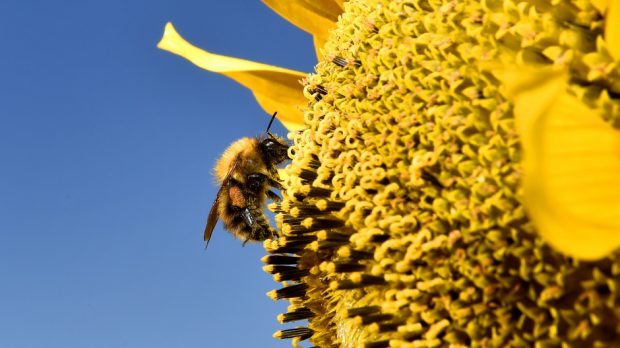One of Scotland’s new monitor farms is taking part in a project to boost the number of pollinators on farms.
Researchers from Scotland’s Rural College (SRUC) are carrying out a three-year project at Prestonhall Farms, at Pathhead, Midlothian, which is one half of the new Lothians monitor farm.
It is hoped increasing wildflower numbers and growing more insect-pollinated crops, such as oilseed rape, will result in an increase in both yields and the number of pollinators on the farm.
“We are going to monitor how improving environmental performance of the monitor farm influences pollinators,” said SRUC agricultural ecologist Lorna Cole.
“We hope to see a greater diversity of pollinators such as bumblebees, solitary bees and hoverflies, and of course an increase in their abundance. Improving pollinator populations should improve and stabilise pollination in insect pollinated crops such as oilseed rape and field beans.”
She said it was also hoped the project would result in an increase in the number of natural predators on the farm, including ladybirds, spiders and parasitic wasps, which should decrease the number of crop-damaging pests such as aphids on farms.
“We’re working on the ecological intensification theory which has shown that through increasing pollinators and natural predators crop yield is improved,” added Ms Cole.
Over the next three years researchers will study the farm’s pollinator population and monitor how successful pollination has been through counting and weighing seeds. They will then relate these findings back to the arable crop yield on the farm.
Ms Cole said: “Abundance and variety are the two key factors to bear in mind. If farmers can increase and diversify the population of pollinators and predators they are likely to at the very least stabilise the important ecosystem services these beneficial insects provide with positive implications to yield.
“We are seeing a lot of fluctuations in environmental conditions, extremes in weather which are likely to continue, and relying on just a few beneficial insects is risky, whereas developing these populations could offer additional protection.”
Farm manager Bill Gray said he was determined that any improvement to the environmental side of the farm would not be detrimental to the business side of the farm.
He said: “While we want to see more pollinators on farm we also want to see a corresponding increase in yield, especially if we devote more land to field margins. Being more environmentally sustainable can have a financial cost, but if that cost it recouped then it is well worth making the changes.”
